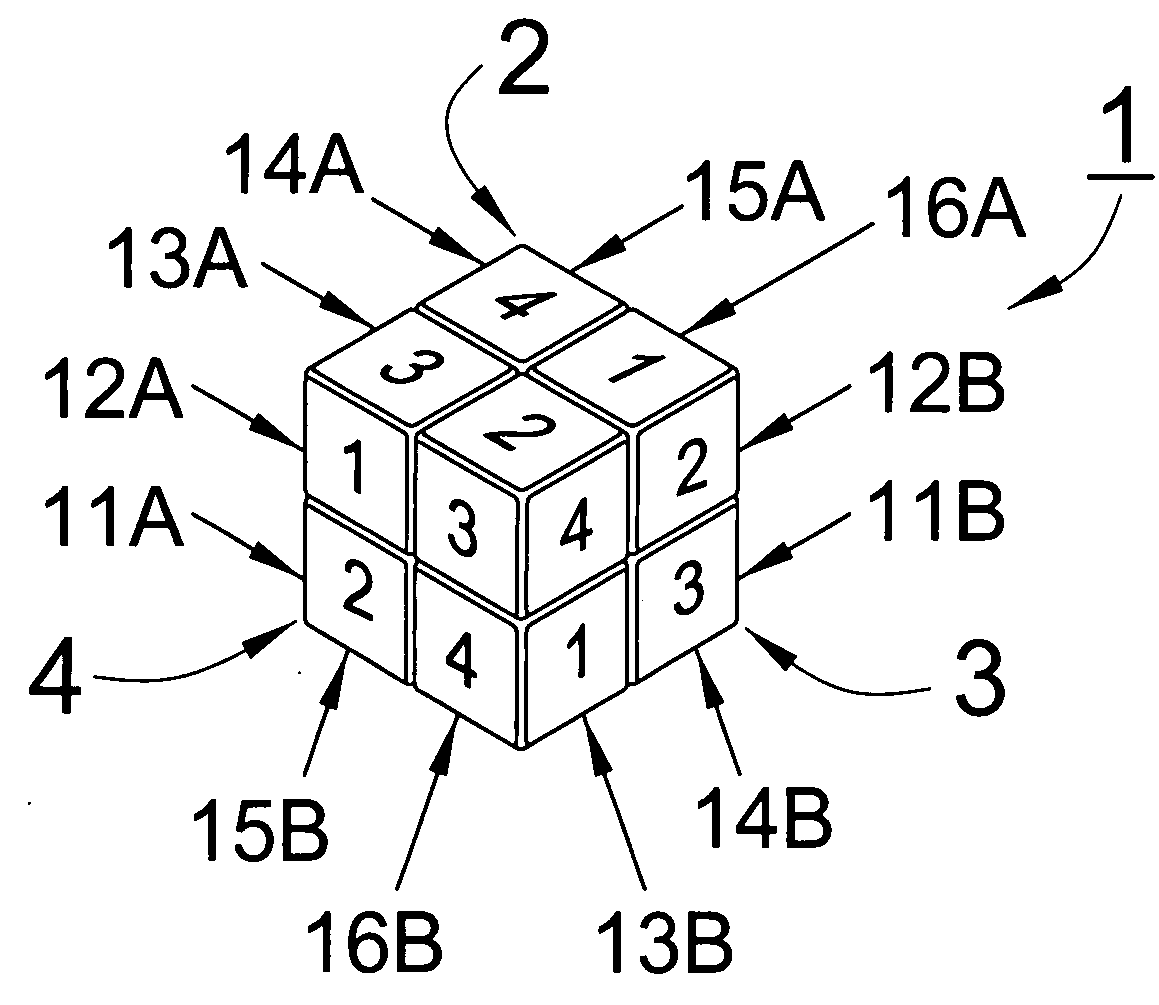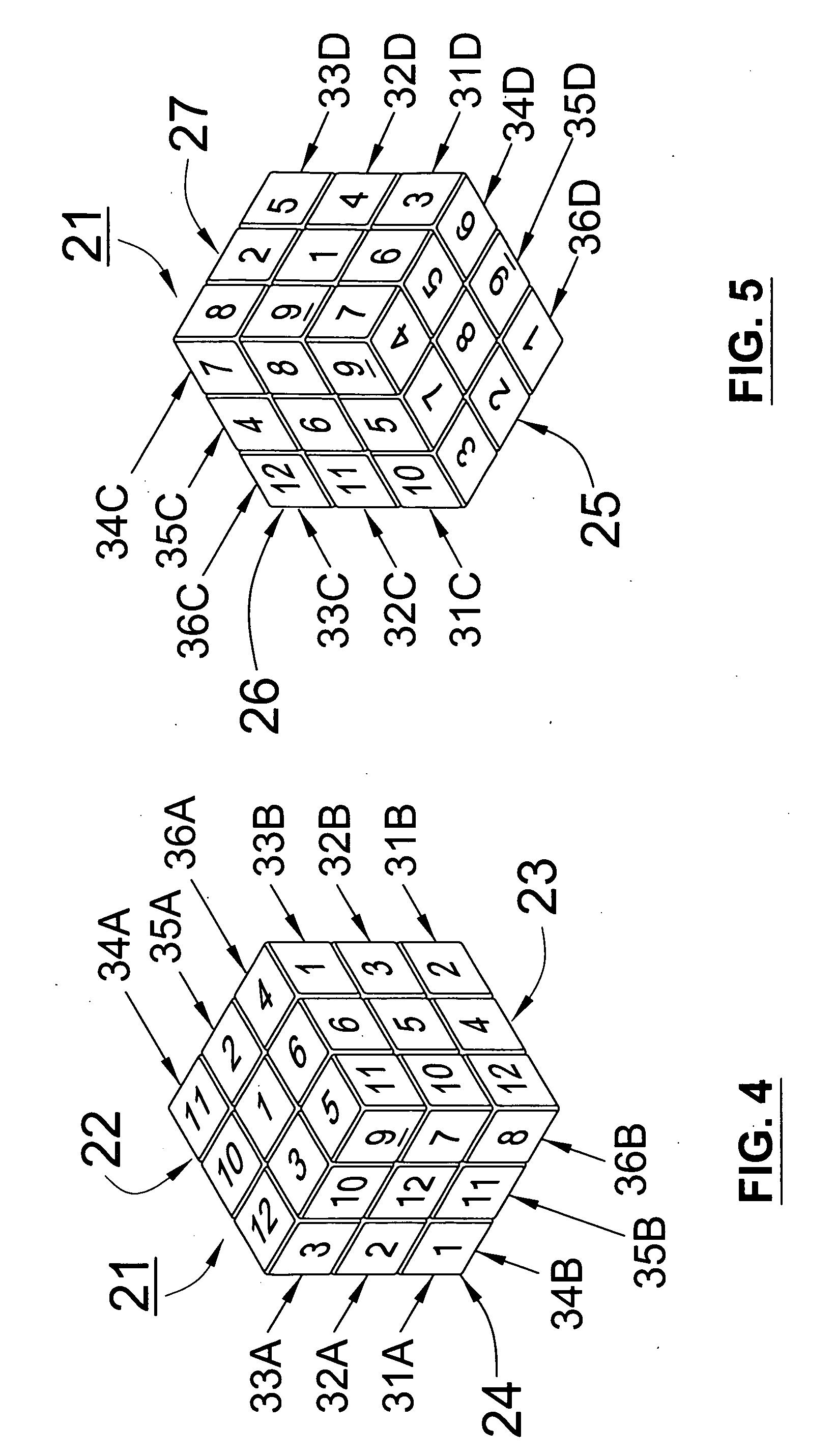Three-dimensional logical cube
- Summary
- Abstract
- Description
- Claims
- Application Information
AI Technical Summary
Benefits of technology
Problems solved by technology
Method used
Image
Examples
Example
[0052]FIG. 1 is illustrated a 2×2×2 logic cube 1 with an isometric top face view 2, an isometric front-right face view 3, and an isometric front-left face view 4. The specific number on each cell on the FIG. 1 is shown in TABLE I which illustrates the particular cells located on specific rows.
TABLE IROW11A12A13A14A15A16A11B12B13B14B15B16B(#)(#)(#)(#)(#)(#)(#)(#)(#)(#)(#)(#)213441321324432132144213
[0053]FIG. 2 is illustrated a 2×2×2 logic cube 1 with an isometric bottom face view 5, an isometric back-left face view 6, and an isometric back-right face view 7. The specific number on each cell on the FIG. 2 is shown in TABLE II which illustrates the particular cells located on specific rows.
TABLE IIROW11C12C13C14C15C16C11D12D13D14D15D16D(#)(#)(#)(#)(#)(#)(#)(#)(#)(#)(#)(#)432132144213213441321324
[0054]FIG. 3 is schematic view of a 2×2×2 logic cube 1, unfold to show all six faces view: top face view 2, front-right face view 3, front-left face view 4, bottom face view 5, back-left face vi...
PUM
 Login to View More
Login to View More Abstract
Description
Claims
Application Information
 Login to View More
Login to View More - R&D
- Intellectual Property
- Life Sciences
- Materials
- Tech Scout
- Unparalleled Data Quality
- Higher Quality Content
- 60% Fewer Hallucinations
Browse by: Latest US Patents, China's latest patents, Technical Efficacy Thesaurus, Application Domain, Technology Topic, Popular Technical Reports.
© 2025 PatSnap. All rights reserved.Legal|Privacy policy|Modern Slavery Act Transparency Statement|Sitemap|About US| Contact US: help@patsnap.com



